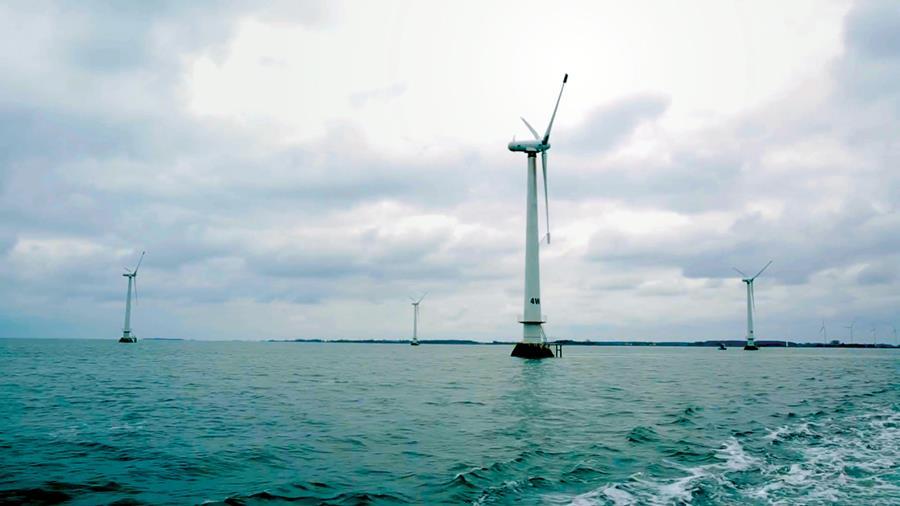
It’s been 20 years since Ørsted (at that time called Dong Energy, and very much a major oil & gas company) commissioned Vindeby in Denmark, which was the world’s first offshore wind farm. It took another 10 years from this modest start (5MW, powering just 2,200 homes) for the offshore wind industry to really start to take off.
Over the intervening years, offshore wind has been the preserve of the traditional energy utilities. However, things are changing, and the supermajor oil & gas companies are now turning in earnest to offshore wind as part of their global decarbonisation plans. These are some of the biggest companies in the world, but they are playing catch up to the longer established developers in the offshore wind sector, with the challenge being not only how to transition from hydrocarbons to renewable energy, but how to transition their contract forms to an industry that is simultaneously both mysteriously novel and surprisingly familiar.
There have been many initiatives over the years in the oil & gas industry to standardise contract terms. The catalyst for this has mainly been periods of commodity price volatility, especially oil price crashes (resulting in the CRINE and LOGIC series of template contracts), serious incidents in the industry such as Piper Alpha (which precipitated the widespread adoption of a mutual hold harmless indemnity regime), and a general understanding that time is of the essence (always chasing first oil or gas) and that life is too short to keep on returning to the drawing board each time another project is to be contracted. This resulted in a golden period of commoditisation of the contract terms used in the oil & gas industry – despite many players developing their own contract forms, in essence they all achieved the same thing in “nearly identical but different” fashion.
Imagine, then, being thrust into a world where an entirely different type of contract form is being used, and it is one that you’ve definitely heard of; possibly occasionally take inspiration from (although not significantly); and on one occasion when you joint ventured with a partner from outside the industry and they were significantly along the road on a project with the banks on board, you begrudgingly accepted (not because it didn’t work, but because it wasn’t familiar). This is where the oil & gas industry finds itself now in relation to the FIDIC form of standard contract, so prevalent in the offshore wind industry, but nearly entirely unused in offshore oil & gas.
The most common question asked by oil & gas companies is therefore “what form should we be contracting on in order to align with the market?” Certain of the earlier offshore wind farms were contracted on amended LOGIC forms of contract, which would be familiar to most in the oil & gas industry, even though they were adapted to incorporate suspiciously FIDIC-looking like provisions. More recently this question is more refined to what colour of FIDIC contract should we be using, which typically leads to the answer Yellow Book. There is no getting away from the fact that for the turbine supply and offshore installation contracts FIDIC is the answer for the masses, albeit that it is not plain vanilla FIDIC, but the highly amended version, with each developer proposing the same thing but in “nearly identical but different” fashion (sounds familiar) – the upside being that the more established developers will propose the same as the last time so the game is that little bit easier, especially in the most buoyant market as currently experienced.
It is here that the oil & gas industry is scratching its head. They have invested heavily in broad suites of template contracts to support their global businesses, have trained their people, automated and innovated, and even now as they are tendering to companies they have contracted with for longer than the existence of the offshore wind industry itself (albeit within a different division) they are being asked to radically rethink and potentially dismantle the foundation of risk and assurance on which they have contracted the largest projects in the world, and base it on something wholly alien. This makes even less sense for the contracts outside of the major projects contracts, for example, marine survey contracts, vessel charters and service and maintenance agreements which are on terms highly familiar to the oil & gas industry. It is becoming apparent that the more the oil & gas industry looks at the offshore wind industry the more it sees the same challenges it has already overcome in relation to contracting major hydrocarbons projects. The thing to watch is whether the industry will become entirely transformed like Dong to Ørsted, and assimilate the world of FIDIC or adopt an approach which doesn’t stray too far from the traditional. The latter seems more likely than the former, but stranger things have happened at sea.
Recommended for you
